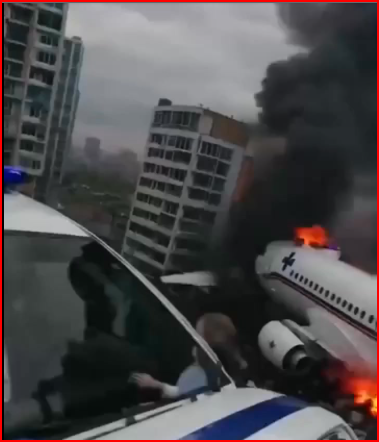Introduction: When the Sky Falls Silent
Every nation faces moments that test its resilience, its unity, and its ability to look ahead with hope despite overwhelming grief. For India, one such moment arrived with the loss of Air India Flight AI171—a tragedy that not only shook the aviation world but also touched the hearts of millions across the globe.
The flight was scheduled as a routine journey, a bridge between Ahmedabad and London Gatwick, connecting families, professionals, and students to opportunities abroad. Yet, what began as a familiar voyage turned into a day of profound sorrow, leaving behind unanswered questions, broken families, and a deep need for truth.
In the hours, days, and weeks that followed, people across India and far beyond turned their eyes to this event—not merely as an accident but as a moment demanding deeper reflection on aviation safety, community strength, and the value of every human life.
This article revisits the story of Flight AI171 in detail, not only recounting what happened but also exploring broader themes: the challenges of modern aviation, the human cost of loss, the courage of responders and families, and the lessons that might help shape a safer tomorrow.
The Flight That Never Reached Its Destination
A Routine Departure
On the afternoon of June 12, 2025, passengers boarded a Boeing 787-8 Dreamliner at Sardar Vallabhbhai Patel International Airport in Ahmedabad. There were 230 passengers and 12 crew members—an entire community of travelers with stories, plans, and dreams.
Some were students headed to the United Kingdom for study, while others were families uniting with relatives. Several business professionals boarded the flight, carrying with them the ambitions of global commerce. For most, it was meant to be a long but otherwise typical international flight.
At 1:10 PM local time, the aircraft lifted off the runway, engines roaring confidently into the sky. For those onboard, the journey appeared normal. For loved ones waiting in London, it was simply the countdown to a long-awaited reunion.
The Distress Signal
Just moments after takeoff, however, the calm sequence of flight operations was shattered. Air traffic controllers received a chilling “Mayday” call—aviation’s most urgent distress signal.
The word Mayday is reserved for situations of extreme peril, when lives are at immediate risk. Its presence on the airwaves brought instant tension in the control tower. Such a call often indicates severe mechanical failure, onboard fire, or a sudden loss of control.
Within minutes, radio contact with the aircraft ceased. For the controllers on duty, those silent moments stretched into eternity, filled with helplessness as the radar blip disappeared.
The Impact on the Ground
The aircraft came down near Ghoda Camp, in the vicinity of Meghaninagar and the Ahmedabad Cantonment. The location was densely populated, which meant the consequences extended beyond those on the plane.
Eyewitnesses described the sound as unlike anything they had heard before—loud, thunderous, and followed by thick plumes of smoke rising into the afternoon sky. Buildings shook, and the ground trembled as people rushed outside in panic.
Within moments, the neighborhood was transformed into a scene of chaos and urgency. Residents and bystanders, without hesitation, ran toward the smoke, not away from it. They attempted to help before professional responders could arrive, displaying courage that would later be recognized across the nation.
Air India Responds to the Unthinkable
Official Statement
Air India quickly released a carefully worded statement:
“Flight AI171, scheduled from Ahmedabad to London Gatwick, encountered a serious incident shortly after departure on June 12, 2025. We are urgently working with authorities to gather full details and will provide updates as they become available.”
The restrained tone reflected both the sensitivity of the moment and the airline’s duty to avoid speculation while families awaited confirmation.
Leadership Reaction
N. Chandrasekaran, Chairman of Air India’s parent company, expressed his sorrow:
“We are deeply grieved by the loss of Flight AI171. Our thoughts and prayers remain with the families of passengers and crew members. Air India will extend its full cooperation to investigators and provide every possible support to families during this unimaginably difficult time.”
The statement was not merely corporate protocol—it was an acknowledgment of human tragedy. Beyond the words, Air India set up helplines, family assistance centers, and counseling services to provide immediate care to those affected.
Emergency Response: The First Minutes After
Racing Against Time
As alarms spread across Ahmedabad, fire brigades, medical teams, and police units mobilized rapidly. Sirens echoed through the city as vehicles sped toward the impact zone.
The scene that met them was challenging: smoke reducing visibility, flames consuming wreckage, and crowds of residents desperate to help. Firefighters battled both the blaze and the difficulty of accessing certain parts of the wreckage. Medical responders searched for survivors, though early assessments were grim.
Community Courage
Local citizens became the first responders. Many rushed with buckets of water, makeshift stretchers, and medical supplies. In moments of collective trauma, humanity’s instinct to help shone brightly. Neighbors supported grieving relatives, comforted children, and worked side by side with professionals.
Even in tragedy, these acts of compassion became a vital part of the story—proof that solidarity endures even in the darkest of hours.
The Investigation: Seeking the Truth
The Role of the Mayday Call
The presence of a Mayday call is a crucial detail. Unlike sudden disappearances, it suggests that the crew had a brief window of awareness of the emergency. Investigators quickly prioritized recovering the black boxes—the cockpit voice recorder (CVR) and flight data recorder (FDR).
These devices hold vital clues: engine readings, altitude changes, communications, and the crew’s final words. Together, they form a technical narrative of the last moments of Flight AI171.
Authorities at Work
The Directorate General of Civil Aviation (DGCA) took immediate charge, supported by Air India, the Ministry of Civil Aviation, and international partners. Boeing dispatched technical teams to India, and global organizations like the International Civil Aviation Organization (ICAO) expressed readiness to contribute.
Investigations of this scale are complex and time-consuming. They involve analyzing debris patterns, testing materials, interviewing witnesses, and considering maintenance logs.
Key Steps Ahead
- Black Box Recovery: Extracting data to reconstruct events.
- Debris Analysis: Determining whether engine parts, electrical systems, or structural components failed.
- Witness Accounts: Verifying reports of sounds, smoke, or unusual flight behavior.
- Maintenance Records: Ensuring the aircraft had met every safety requirement.
The Human Cost: A Nation in Mourning
Families Waiting for News
For the relatives of the 242 people onboard, hours felt like centuries. Families gathered in waiting areas at airports, their faces reflecting shock, disbelief, and desperate hope.
Counseling centers were established where volunteers, psychologists, and clergy offered support. Many families clung to photographs of loved ones, silently praying for miracles even as news reports turned darker.
National Grief
Across India, the tragedy became a shared sorrow. Candlelight vigils were held in Ahmedabad, New Delhi, and beyond. Temples, mosques, churches, and gurudwaras opened their doors for prayers.
Political leaders across party lines suspended rivalries to stand united in offering condolences. Television and online platforms carried continuous coverage, reflecting the nation’s deep emotional investment in the story.
Aviation Safety: Broader Reflections
Air India’s Safety Record
Air India, like other major airlines, has operated for decades with a generally safe record. Yet, the airline has faced incidents in the past. Every new tragedy, however rare, raises fresh questions about maintenance, training, and regulatory oversight.
The Global Context
Commercial aviation remains one of the safest modes of transport. Billions of passengers fly annually with only a fraction encountering serious accidents. Yet, when accidents occur, their impact is amplified because of the number of lives at stake and the public’s reliance on aviation.
Organizations like IATA (International Air Transport Association) emphasize continuous improvement—through better training, technology, and coordination among airlines and regulators.
Lessons to Learn
- Transparency Matters: Families and citizens require timely, accurate information.
- Emergency Preparedness Saves Lives: Rapid responses, even in worst-case scenarios, can reduce casualties on the ground.
- Continuous Investment: Maintenance standards, pilot training, and technology upgrades must remain uncompromised.
- Human Respect: Every tragedy is not just about numbers but individual lives, stories, and dreams.
Remembering Other Aviation Incidents
History provides painful but important context:
- Air India Flight 182 (1985): A bombing that transformed global airport security practices.
- Malaysia Airlines Flight MH370 (2014): A disappearance that reshaped approaches to aircraft tracking.
- Ethiopian Airlines Flight 302 (2019): A crash that triggered a worldwide grounding of the Boeing 737 MAX.
Each event led to reforms. Likewise, the AI171 tragedy will serve as a turning point for renewed discussions about air safety and accountability.
A Community Forever Changed
For the residents near Ghoda Camp, the landscape of their daily lives has been altered forever. Homes damaged, memories scarred, and the trauma of witnessing the unimaginable will linger for years.
Support services, counseling, and community rebuilding programs will be necessary to help survivors and witnesses process their experiences.
Conclusion: A Tragedy That Demands More Than Answers
The story of Air India Flight AI171 is not just about a fallen aircraft—it is about people. It is about 242 lives, each with unique journeys, families, and dreams.
The Mayday call, the desperate attempt of pilots to communicate, stands as both a haunting reminder of the urgency of those moments and a beacon for investigators seeking truth.
India, and indeed the world, now waits for those answers. But beyond technical reports and official statements, this event calls for something deeper: a collective commitment to honor the lives lost by ensuring safer skies for generations to come.
As India grieves, it also reflects. And in that reflection lies determination—the determination to build, to reform, and to protect, so that such a tragedy may never repeat itself.c



